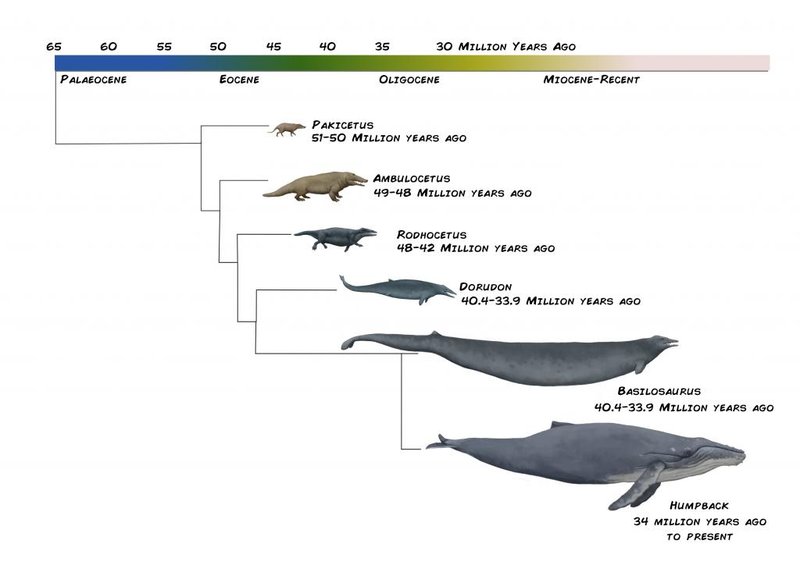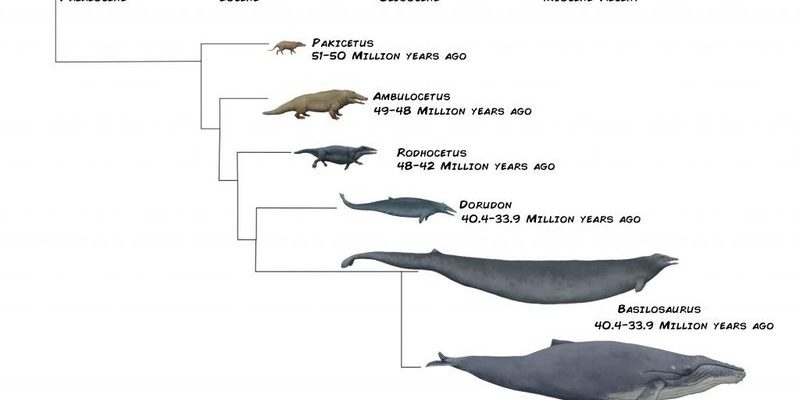
Imagine you’re sitting down with a friend, sipping coffee, and they ask about whales. Instead of just rattling off facts, you dive into the story. You explain how these creatures have transformed over time, from furry little mammals that roamed the land to the impressive marine mammals we see today. It’s a journey filled with adaptations, environmental changes, and natural selection—a real-life example of evolution in action.
So, let’s explore the incredible evolutionary journey of whales. From their terrestrial origins to their adaptations for life in the sea, every step tells a captivating story that connects us to the natural world.
Whales’ Terrestrial Ancestors: The Land Mammals
Whales didn’t just pop into existence as the creatures we know today. Their story begins about 50 million years ago with land mammals. These creatures, known as *artiodactyls*, included animals like hippos and deer. Interestingly, scientists believe that modern whales are more closely related to hippos than to any other marine mammals.
You might be wondering how these land mammals evolved into such aquatic giants. It all started with environmental changes. As landmasses shifted and climates varied, some of these mammals found themselves drawn to water. They were likely in search of food or safer environments. This shift marked the beginning of a long journey into the ocean.
The process didn’t happen overnight. Over millions of years, these mammals faced evolving challenges, prompting changes in their body structure and abilities. For instance, as they spent more time in water, their limbs gradually transformed into flippers, allowing for better swimming.
The First Whales: Transitioning to the Water
The earliest known whales are called *Pakicetus*, which lived around 50 million years ago. They looked a bit like modern-day wolves but had many adaptations for life in the water. Imagine a creature that still retained its furry exterior but was starting to become more streamlined for swimming.
These early whales lived in shallow waters and relied on their keen sense of hearing and smell to navigate their environments. It’s fascinating to think about how these adaptations were essential for their survival. As they continued to evolve, they began to develop features that would become synonymous with whales today—like a more elongated body and a specialized ear structure for underwater communication.
By the time we meet *Dorudon*—an ancestor that lived around 35 million years ago—the transformation was really underway. *Dorudon* was much closer in appearance to modern whales, with a more hydrodynamic shape and a tail designed for powerful swimming. It’s like watching a slow-motion film of evolution at work!
From Land to Sea: How Whales Adapted
You might be surprised to learn that the transition from land to sea involved radical changes for these mammals. One of the most significant adaptations was the loss of their legs. As whales became more specialized for life in the water, their limbs evolved into flippers, allowing for efficient movement through the ocean.
Another key change was the development of blubber—a thick layer of fat beneath the skin. This adaptation helped whales maintain body heat in cold ocean waters, much like a well-insulated jacket. Imagine how different life would be if you had to adapt to such extreme conditions!
Whales also underwent changes in their respiratory systems. Unlike land animals, whales have a blowhole on the top of their heads, allowing them to breathe easily while swimming. It’s a genius adaptation that keeps them buoyant while they surface for air.
The Diversity of Whales: From Baleen to Toothed
Today, there are two main types of whales: baleen whales and toothed whales. This diversity is a result of millions of years of evolution, and each type boasts unique adaptations.
Baleen whales, like the blue whale, use a filtering system to catch food. They take in large amounts of water while swimming and then push it out through their baleen plates, trapping small fish and krill inside. It’s like a natural sieve, designed through countless generations to maximize feeding efficiency.
On the other hand, toothed whales, such as orcas and sperm whales, are more like traditional predators. They have teeth for catching fish and other marine life. Their hunting strategies are diverse and sophisticated. For instance, orcas are known for their teamwork and communication, making them highly effective hunters.
This divide in feeding strategies has allowed whales to adapt to various ocean environments and food sources, showcasing the brilliance of evolution.
Whales and Their Environment
The relationship between whales and their environment is a crucial aspect of their evolutionary journey. As oceans changed over millions of years, so did the whales. From the shallow seas of the Eocene to the deep ocean has been a journey of adaptation.
Changes in water temperature, food availability, and even ocean currents have pushed whales to evolve and thrive. For example, during the ice ages, some species migrated to warmer waters to breed, showcasing their adaptability to changing climates.
Here’s the thing: their evolution isn’t just about physical changes. It’s also about how they interact with their ecosystem. Whales play a significant role in maintaining the health of ocean environments through their feeding habits and migrations, impacting everything from nutrient cycling to the survival of other marine species.
Whale Conservation: A Modern Challenge
While whales have successfully adapted to changing environments for millions of years, today, they face unprecedented challenges. Human activities—like hunting, pollution, and climate change—are putting pressure on whale populations worldwide.
You might be surprised to learn that some species, like the North Atlantic right whale, are critically endangered, with only a few dozen individuals left. This is a stark reminder of how quickly our actions can impact these majestic creatures.
Conservation efforts are essential to protect whales and their habitats. Organizations are working tirelessly to create marine protected areas, reduce pollution, and limit ship traffic in whale migration corridors. It’s a collaborative effort that combines science, policy, and community action to ensure that whales continue to thrive for generations to come.
The Future of Whales: Evolution Continues
The evolutionary journey of whales is far from over. Just as they adapted to their environments in the past, they will continue to evolve in response to modern-day challenges. It’s a fascinating thought, isn’t it? The idea that these magnificent creatures are still shaping their destiny, just like their ancestors did millions of years ago.
As we learn more about these incredible animals, it becomes clear that we play a role in this journey. Whether it’s through supporting conservation efforts or simply spreading awareness, each of us can contribute to the future of whales. Their story reminds us of the interconnectedness of life on Earth, and how our actions impact even the most majestic creatures.
In conclusion, the evolutionary journey of the whale is a majestic tale of adaptation, survival, and environmental connection. Understanding their past helps us appreciate the present and motivates us to protect these magnificent beings. After all, the ocean is a vast, shared home, and whales are a vital part of its story. Let’s continue to learn from them and do our part to ensure they thrive for years to come.

